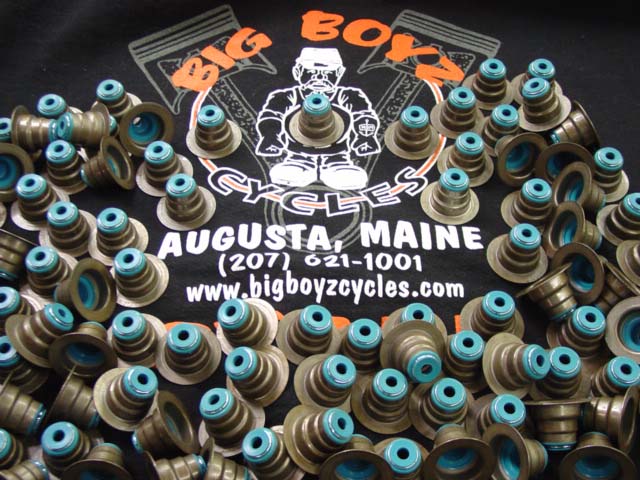This thread was written in 2005 but I feel all the info is still valid. It contains fixes that we have used with sucess BUT we are no longer using them since we feel there are other alternatives out there now. Although I feel the fixes are still valid and would work as well.
Bean and myself were discussing the 05 Oil Consumption problem. Bean noticed a trend when disassembling 05 heads. He has had a set of 05 heads on the shelf for a couple of months. We decided to disassemble them and compare the new (-02A) valve seals to the original seals (-02's) used in production. He told me exactly what we were going to see when we took them apart, the cause of the oil consumption in 05 heads.
First we compared the new -02A seals (orange) with the -02's (black). I noticed that the rubber seemed softer, possibly a different compound than the black rubber. Next I noticed what looked like a difference. It seemed the orange seal had a thicker wall than the black seal (green arrows).

So I measured the diameter of the seal. The original seal (black) measured at .550 and the new -02A seal (orange) measured .525. Seems as though the factory made the seal a tighter fit around the valve guide. There were no other noticeable differences.


Also included with the new seals is a protector that slips over the valve while installing the seal. The original seals do not come with this protector. The 04-earlier seals come with a protector for installation.
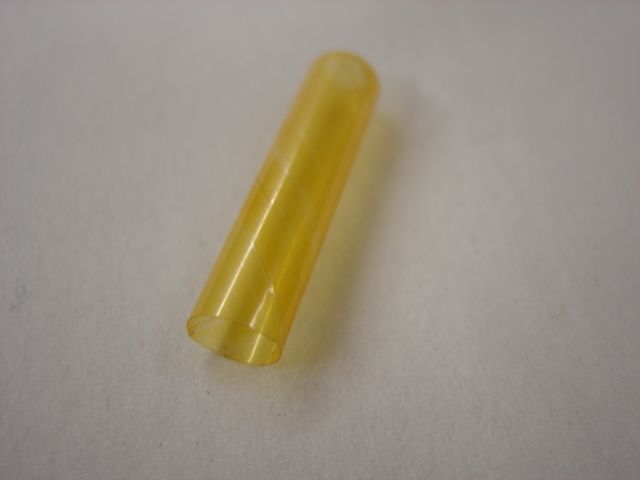
As mentioned these heads have been sitting on a shelf for a couple months. The heads were dry (no pooled oil). I took a picture of the assembled head so you could see around the spring. The RED arrows point the lowest point around the spring. Note the shiny, clean machined aluminum.
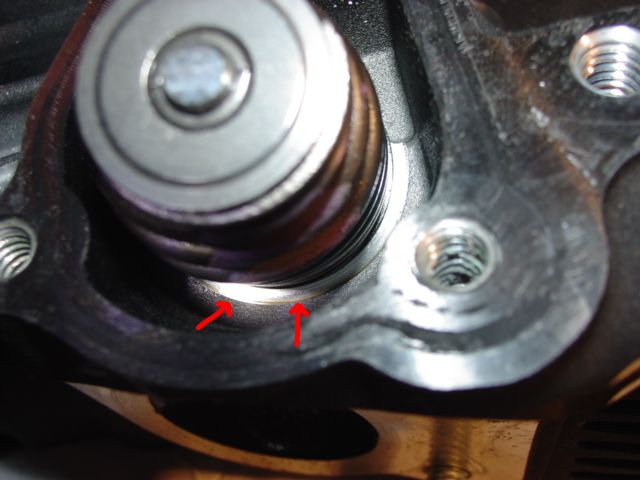
We removed the spring and left the valve seal in place. Again note the aluminum around the base of the seal.

Now we remove the seal. As soon as we lift it, oil runs out of the seal. That oil was trapped in the seal. Note the amount of oil now. None of that leaked out after a couple months on the shelf. This is what Bean told me we would find before we took it apart.
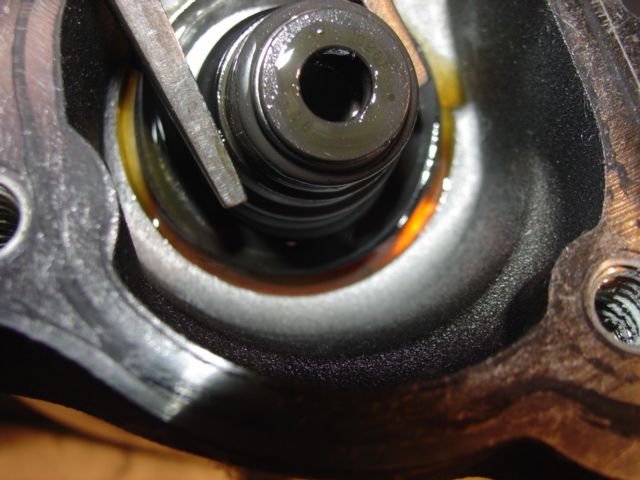
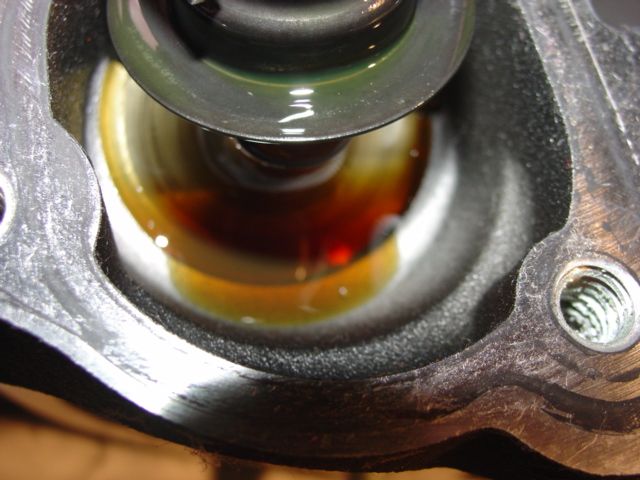

You can see the oil dripping and pooling in the seal that was just removed. This by the way is an intake. Also note the valve stem, head and intake port were wet with oil.

What we believe is happening is the oil is being drawn in due to a low pressure being created in the valve seal. The oil is then drawn under the lower spring seat. The spring applying pressure to the seat is sealing it enough that the oil won't drain out. The seal acts like a pump of sorts and draws the oil in. Drawing oil under the seat and "pumping" it up through the seal and into the guide. The factory reduced the diameter of the sealing surface creating more of an interference fit (a tighter seal). This makes it harder to "pump" the oil past the seal thus "fixing" the problem. We don't necessarily think this fixes the problem but rather cures the symptom. The problem of the pressure build up should still be there but hopefully it can't overcome the newer tighter seal.
Instead we came up with our own modification that should eliminate the problem.
This is only for informational purposes and is not tested in anyway at this point in time. Any modifications that you make to your bike are at your risk.
First we took the new -02A seal and removed the rubber part as follows. Carefully squeeze and pull one side out of the metal spring seat.

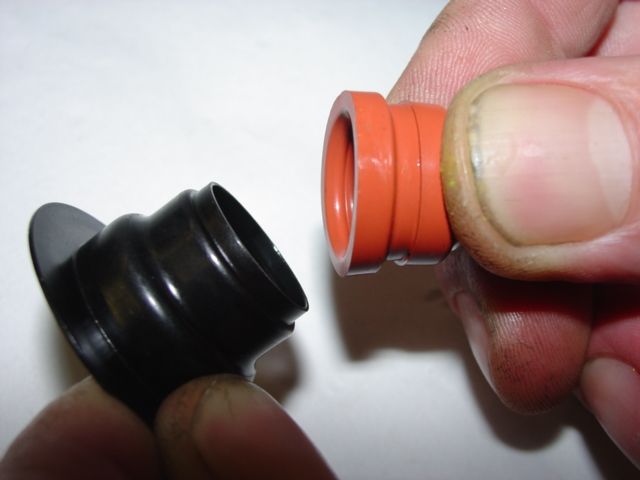
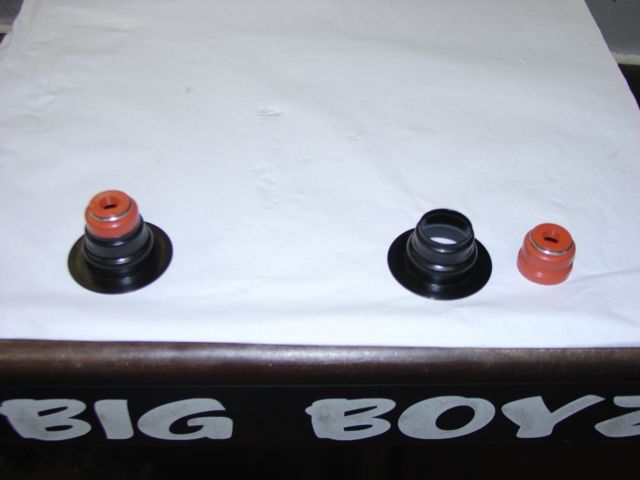
Once disassembled drill 6 equally spaced holes around the base of the spring seat. DO NOT DRILL THE SEAT. Drill just above the 90 degree bend off the seat. As shown in picture. REMOVE ANY CHIPS, BURRS AND ROUGH EDGES. Reassemble the seal/seat assembly gently squeezing the rubberseal and incerting it. Carefull not to cut or damage the rubber part of the seal.
This will prevent any pressure or oil build up inside the metal spring seat eliminating the "pumping" effect.
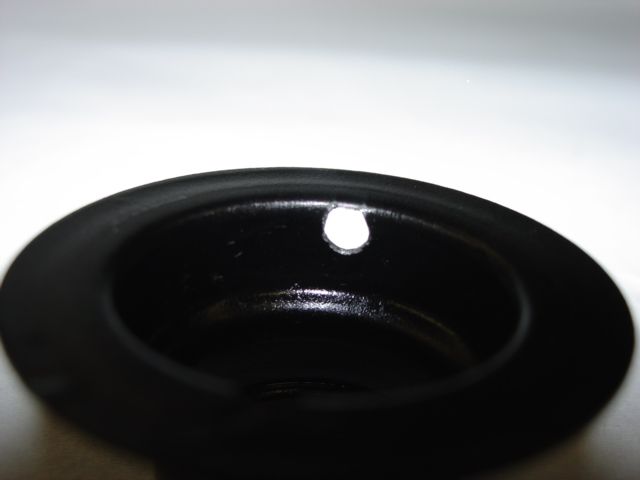
In a previous post about the 05 oil consumption, I examined the new style oil seals. I compared the -02 version with the -02A version. After noticing the build up of oil in the spring seat, I suggested that drilling a series of holes in the spring seat could eleviate the problem. The holes would not allow the oil to build up and bypass the seal at the guide diameter. I still feel this would be an adequate resolution to the problem. Here is the thread ...
We have several solutions implemented and so far have not had an issue, including using the drilled spring seats. Although we only use the updated -02A seals for customer heads, we never stopped looking for a better solution. Recently we located a company that was examining the same oil consumption problem and had an opportunity to compare notes. What they determined to be the problem was the build up of oil in the spring seat, as we had also seen. I had summarized the oil was entering under the spring seat. They had a different opinion. What they found was the oil was entering where the seal and the spring seat met. The solution was bonding the rubber seal to the metal spring seat. This would stop the oil from entering the spring seat and becoming trapped. They also extended the spring seat which seems to give it a more positive location off the guide.
To check the theory of the oil entering between the seat to seal connection, I took a few apart and did a simple visual examination. The first thing I noticed was a coating of oil between the seat and the seal. After I took seal out, there was a significant amount of oil on it. I wiped it off on the paper so you can see it.
In the very near future we will be implementing these seals on all 05-06 heads. We will also have them available for purchase.
Here are the different valve seals

In this picture the red arrow points to the oil in the seat to seal contact area. Note the shine on the rubber were the arrow points compared to the rubber above it. That is the oil, difficult to capture in the picture.
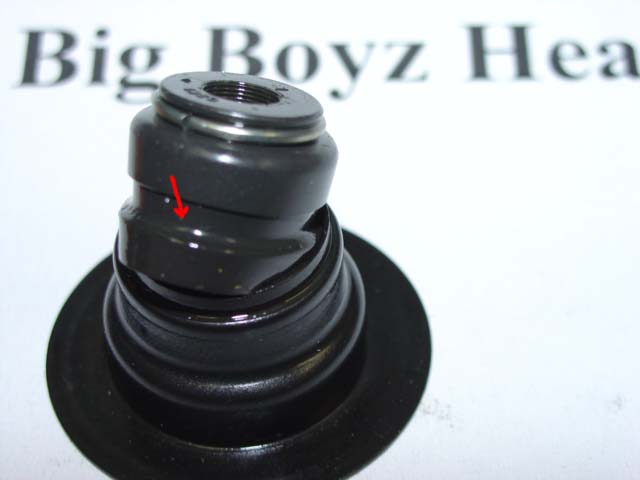
The yellow arrows point to oil on the seal and on the paper where I rolled it so you can see it better.
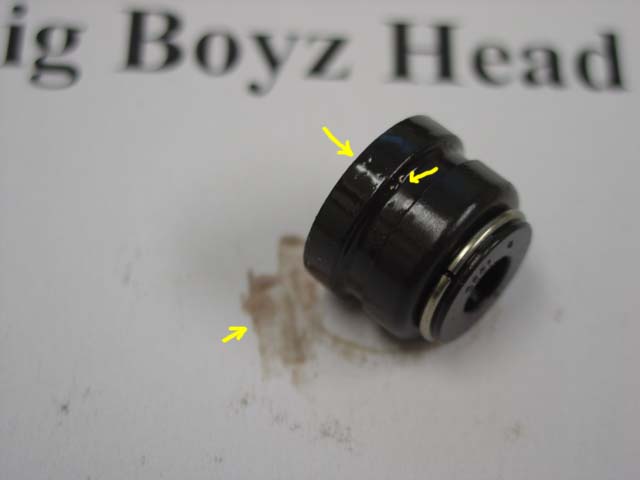
This is the new seal. The Red line marks the added spring seat metal I mentioned above. The yellow line indicates the bonding area. The blue rubber is bonded the entire distance of the yellow line, inside.

We use these exclusively now unless otherwise requested. We also sell them as mentioned below.
Fits 05-present Twin Cam, 04-present Sportster
$15.00 for a set of 4 and that INCLUDES shipping (continental US).
